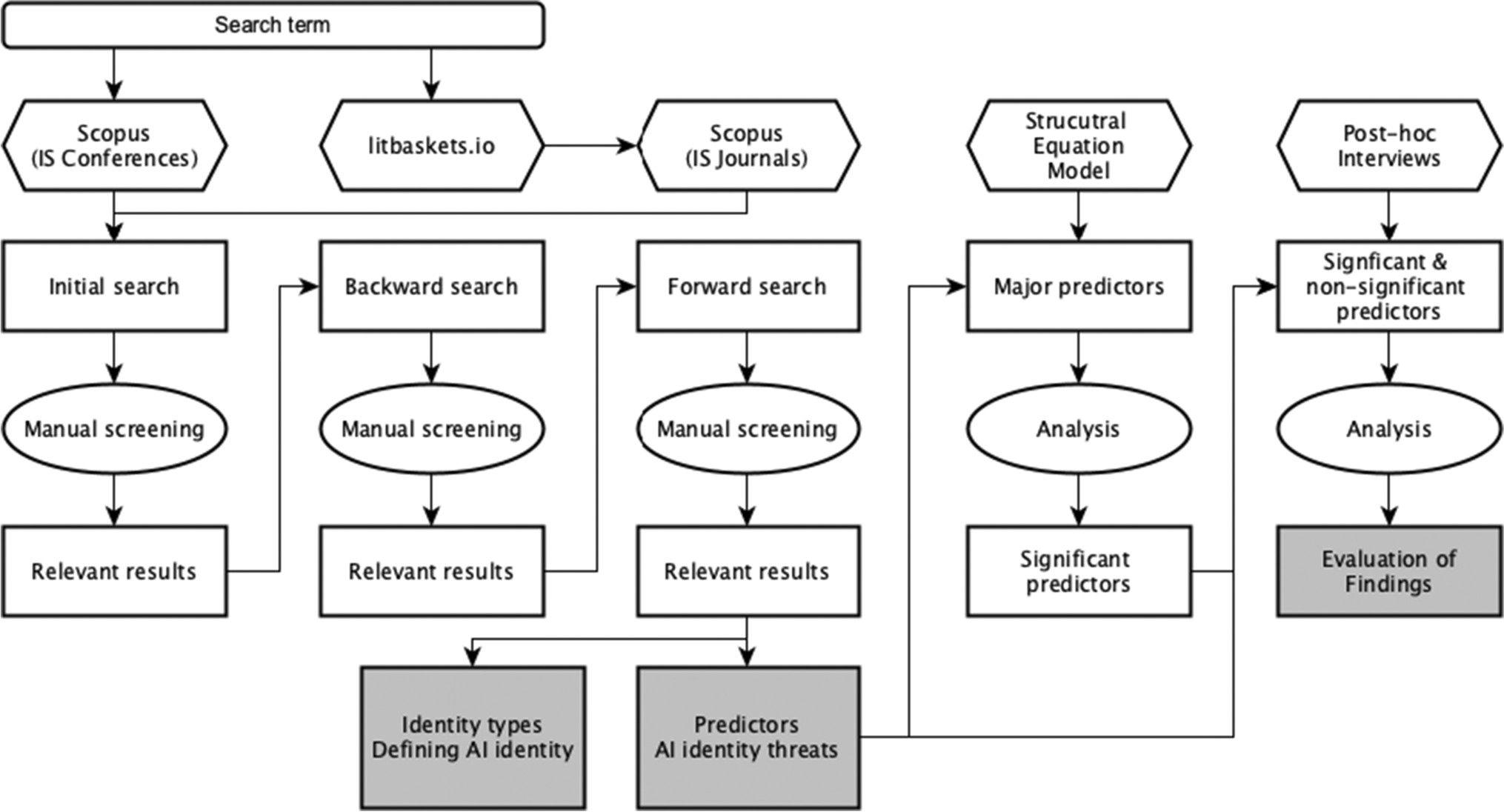Integrating AI into business - The place of the human being
Source:
Springer Link

Fig.1: Research model including constructs and hypotheses as developed from the literature
The deployment of artificial intelligence (AI) in the workplace is intensifying, leading employees to collaborate more and more with AI. This interaction between machine and human augurs a new form of human-algorithm collaboration, which is not without consequences for employees.
This study by researchers Milad Mirbabaie, Felix Brünker, Nicholas R. J. Möllmann Frick and Stefan Stieglitz has 2 objectives.
The first objective is to highlight the socio-psychological impact of the use of AI-based tools on employees and their work environments.
The second objective is to enhance the scientific literature on information systems.
To validate their model, Milad Mirbabaie & al. used a data analysis method known as the PLS-SEM approach. PLS-SEM stands for Partial Least Squares - Structural Equation Models. In short, the PLS approach is based on components (predictive model) and SEM is built on covariances (confirmatory model).
After referencing the various scientific literatures addressing the socio-psychological effects of employees on the use of information technologies, as well as referencing the scientific literature on the impact of AI on human-machine interactions and on the psychological impact of employees.
Milad Mirbabaie & al. were able to study these different results using several analysis methods. To obtain their results, Milad Mirbabaie & al. used :
- Cronbach's alpha coefficient ;
- Composite reliability (or construct reliability) ;
- Rho_A (or Spearman's rank correlation coefficient).

Fig.2: Procedures of the applied methods
This study also highlighted the fact that IT and AI are both distinct fields. However, it also shows that IT and AI are complementary to each other.
Bibliography: (text APA)
Mirbabaie, M., Brünker, F., Möllmann Frick, N.R.J. et al. The rise of artificial intelligence – understanding the AI identity threat at the workplace. Electron Markets 32 73–99 (2022).
https://doi.org/10.1007/s12525-021-00496-x

